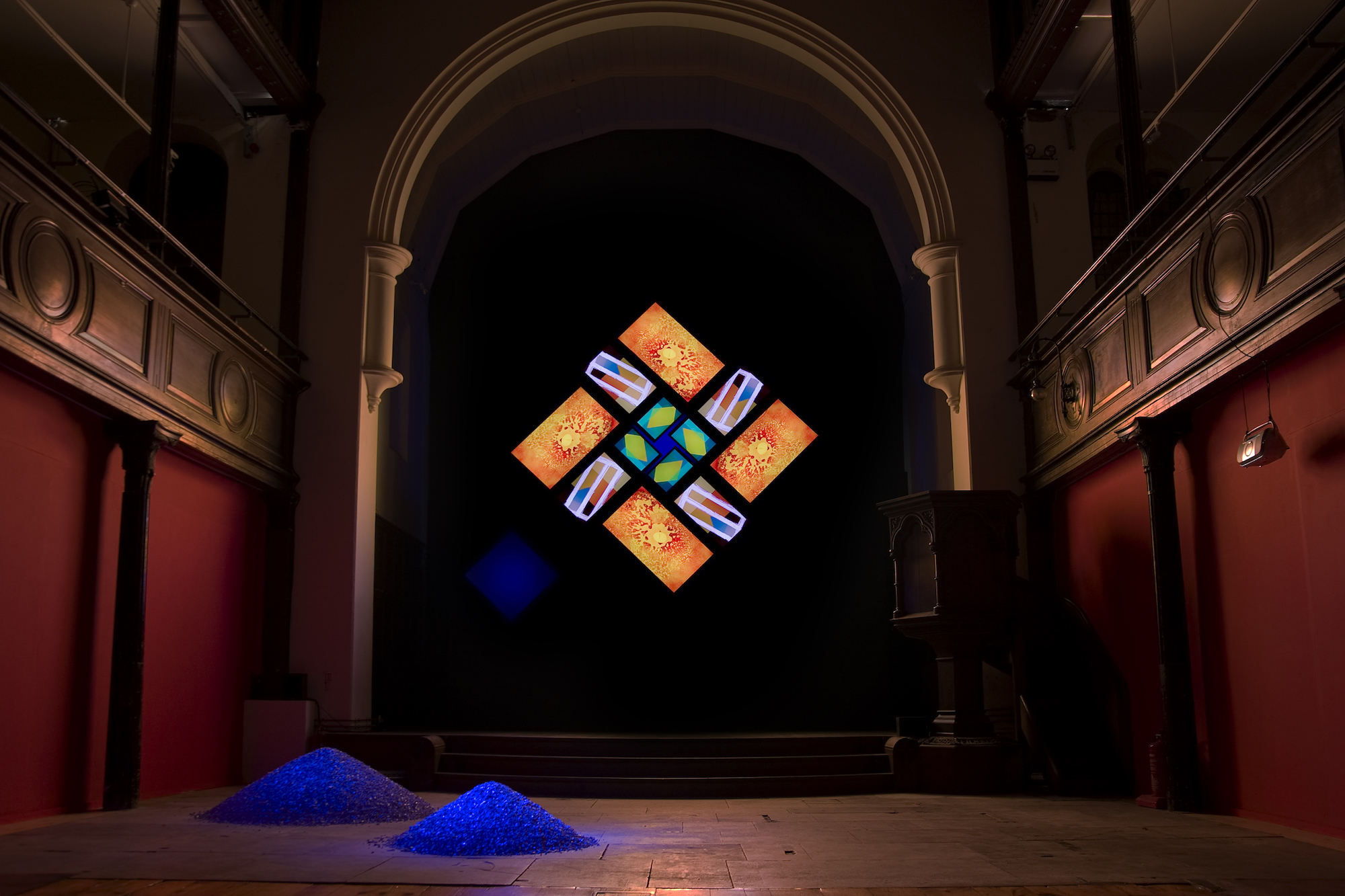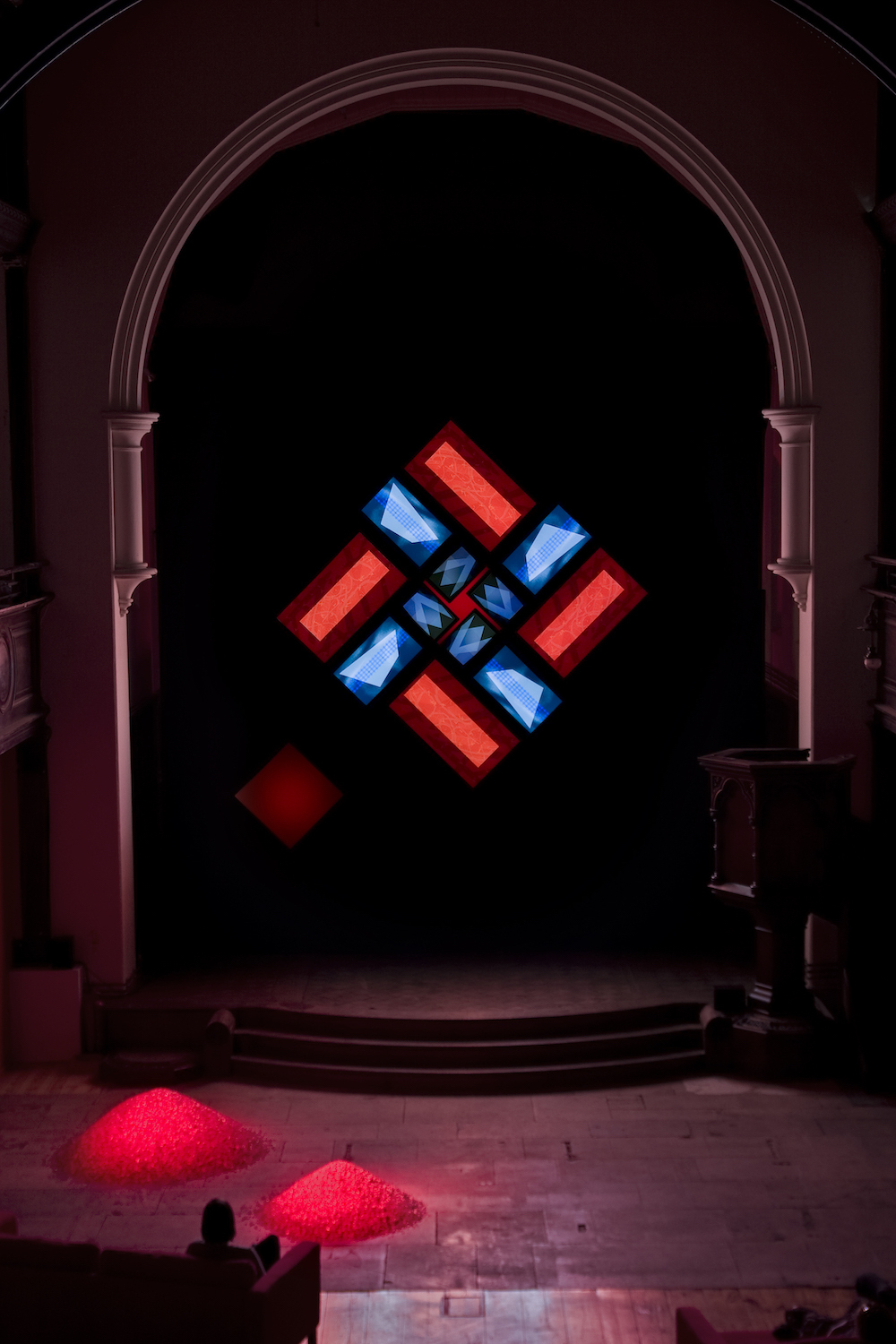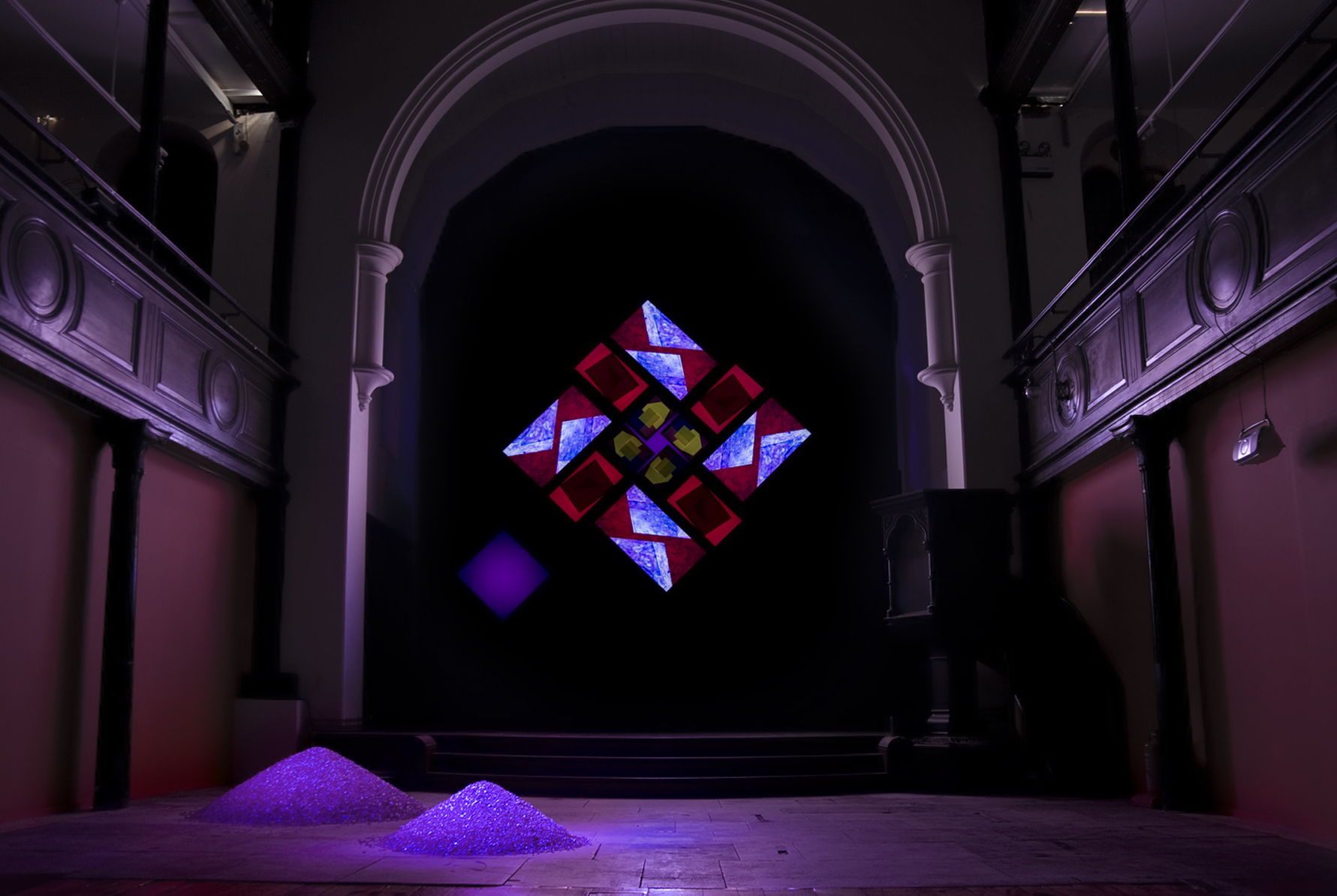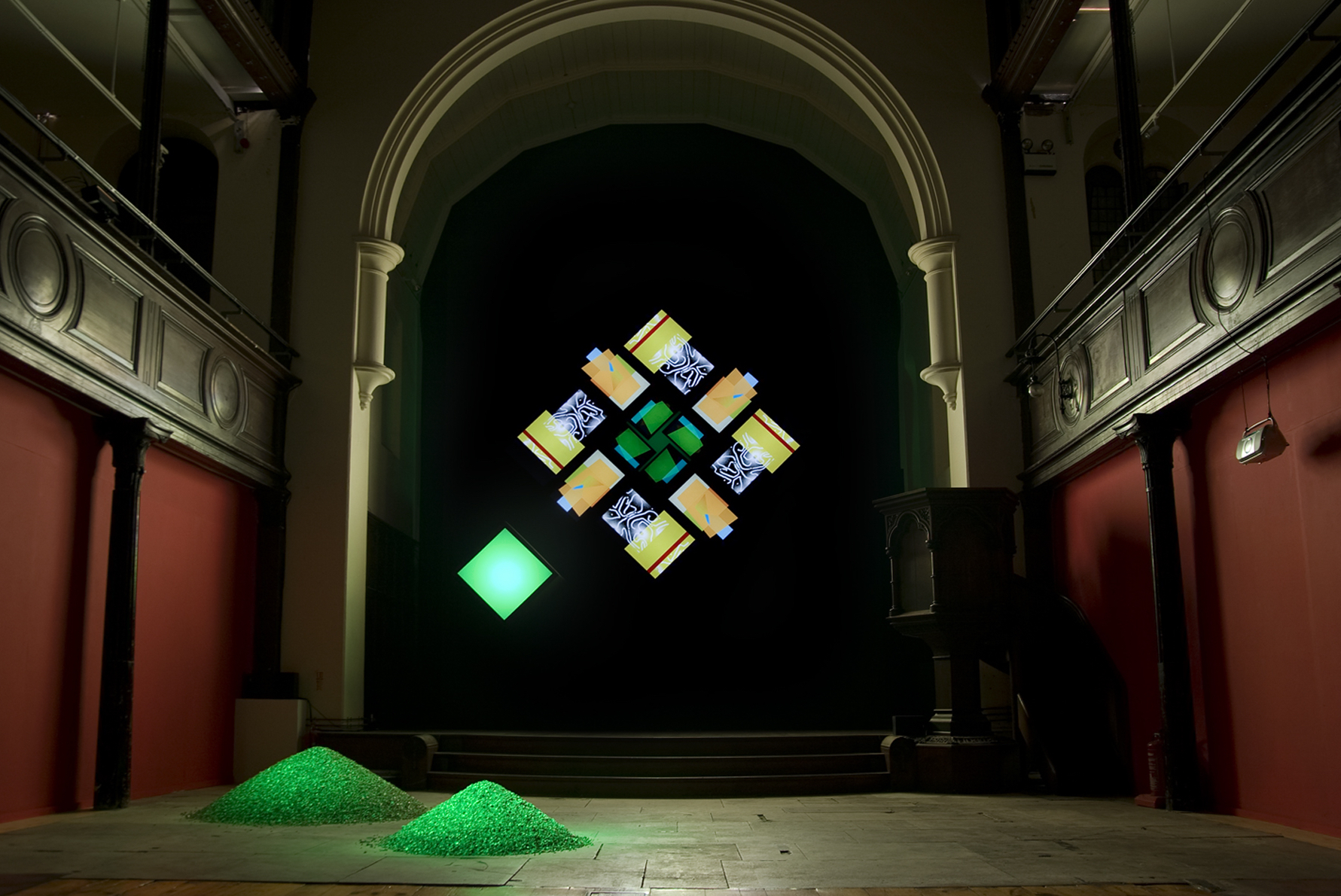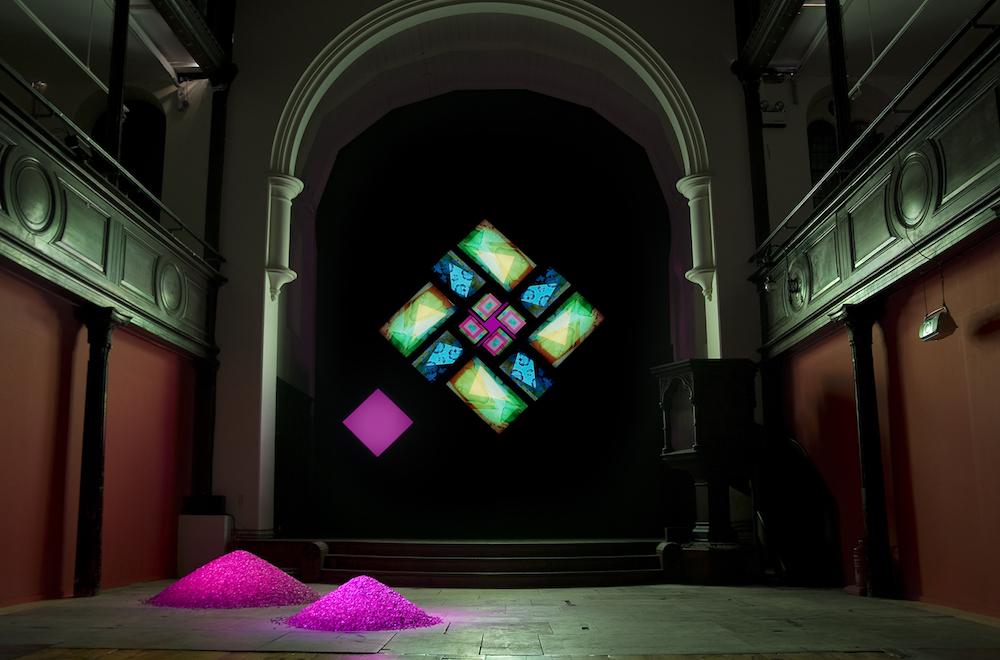77 Million Paintings
Brian Eno
About The Artist
Artist, musician, producer, songwriter and political activist Brian Eno has always been interested in the synthesis of sound and image.
Frustrated by the lack of control one could have over light sources compared with the burgeoning variety of equipment for sound, he put aside his experiments and concentrated on music. Until that is he was offered a video camera whilst in New York, and by both accident and design created monitor-based pieces such as Mistaken Memories of Mediaeval Manhattan, using televisions turned on their sides. These were among the first of his light paintings to go on display at a gallery. This was in 1978. He continued with these figurative pieces through the 1980s creating a collection of them for an installation at LaFort Museum in Tokyo in 1983.
The breakthrough in thought came in the late 1980s when Eno turned his attention to television monitors as a ‘source of light rather than a source of images, as T.V. was actually the most controllable light source ever invented’, each pixel individually controllable. This, in turn, led to experiments in video which were shown across Europe, Japan, and North America throughout the 1980s and 1990s.
At about this time, the idea of using projectors was introduced, especially the notion of having multiple projectors all aligned to the same point, thus giving the opportunity to overlap images. And with every slide being unique and every projector carrousel having a different number of slides, coupled with differing fade times, an almost infinite number of possible permutations was realised. These were first shown in Milan and then later at Amlux in Tokyo.
The last great hurdle was to develop a way to bring these ideas together in a format that was easy to control and manipulate. It was the advent of fast computers along with flat-screen monitors that gave rise to the idea that is now 77 Million Paintings.
The artwork was originally conceived in 2006 as the next evolutionary stage in Brian Eno’s fascination with the aesthetic possibilities of ‘generative’ software by offering infinite, non- linear ‘visual music’ for the idle screen.
Since then Eno’s vision has been transformed into a major gallery experience, shown across the world from the Venice Biennale and Milan Triennale to Tokyo and San Francisco.
Artist Residencies
Painter and conservator Stig Evans was the artist in residence for the duration of the 77 Million Paintings exhibition. As well as running a number of experiments and workshops over this period, he was also able to indulge his interest in colour and our relationship to it. Eno’s kaleidoscopic installation provided the perfect starting point for this, allowing a full exploration of human responses to, and the historical and chemical provenance of colour.
